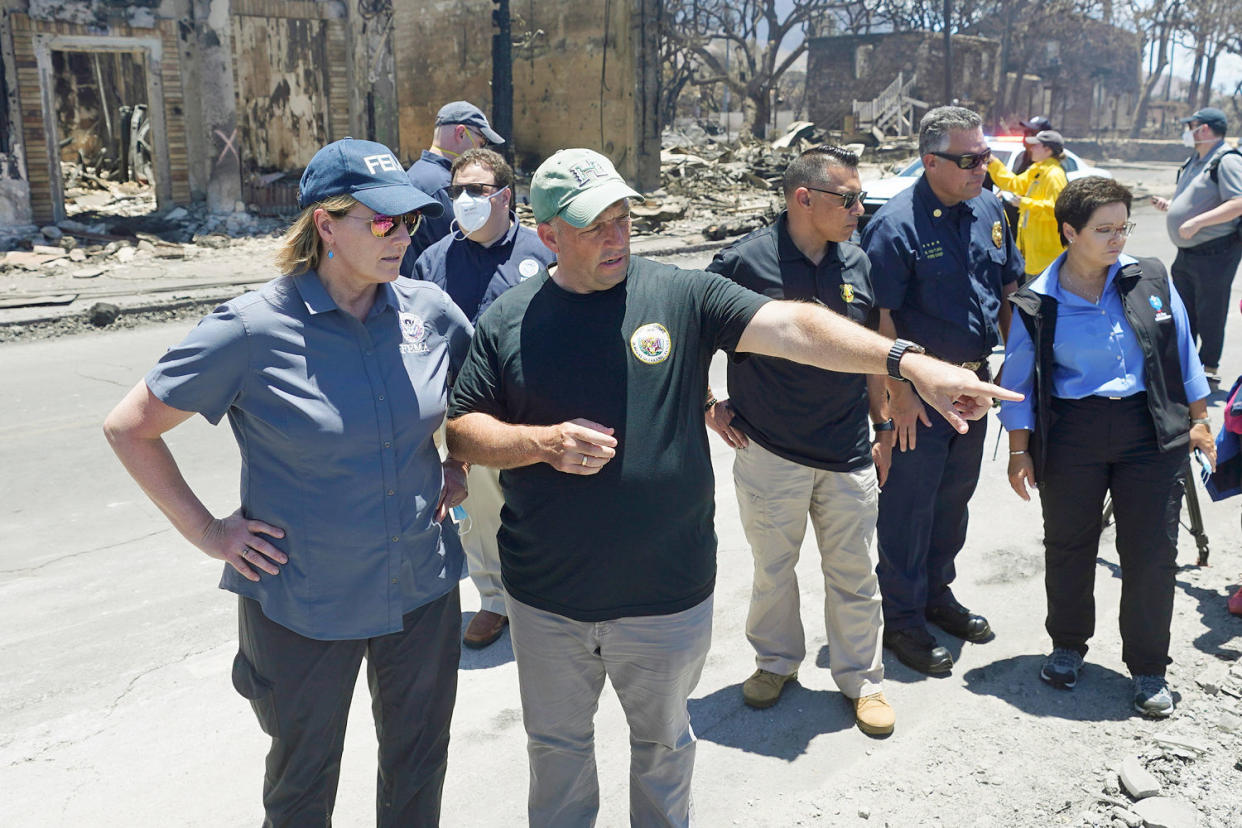Hawaii's governor says most residents displaced by wildfire now have long-term housing
Nine months after a deadly wildfire burned Lahaina, Hawaii, to the ground, the number of people living in hotels and other short-term housing has been reduced by 80%, Gov. Josh Green said this week.
Housing for local residents was already extremely tight when the Aug. 8 fire — one of three on Maui that day — killed at least 102 people and destroyed 2,173 homes. It left 3,071 households without permanent shelter, a number that has been reduced to 628, Green said, adding that 1,596 people are still transitioning to long-term housing.
Green, a Democrat and former emergency room doctor who later tended to the medical care of families on the Big Island of Hawaii, said that in the immediate aftermath he paid a visit to the place no family wants to have to go to.
“I went personally into the morgue to see, as a governor, the people that we had lost,” he said. “I have to be kind of a father figure to everyone that I’m with, or an uncle or brother to them. So it was devastating.”
Green, 54, said he has seen tragedy his whole life as a physician, “but this was very different” as he came face-to-face with the enormity of the loss to the people of Hawaii. He said the state's residents had no choice but to move forward.
“Once people were lost, we just had to pick up the pieces,” he said.

Those pieces included finding or creating housing, rebuilding the historic town of Lahaina, providing financial assistance to survivors, improving emergency preparedness and dealing with the inevitable finger-pointing that comes in the wake of a deadly disaster. Investigators are still trying to determine what caused the fire.
Green said he is taking each of them one at a time, starting with the biggest — housing. He vowed that by the wildfire’s first anniversary, more than 90% of the destroyed lots will be cleared and “all of the people will be in long-term housing.”
“We want to go fast because there’s nowhere to go,” he said, referring to the state’s overall housing shortage. “I mean, people aren’t going to want to leave Hawaii.”
Green said the state had broken ground on over 500 single-family homes. He also recently signed a bill giving select counties the power to convert short-term rentals into long-term housing and to determine where vacation rentals should be permitted.
“So now, short-term rentals will be pushed back into the long-term rental market by the counties,” he said. “And that’s a big deal.”
He said Maui alone has 7,000 short-term rentals, and 2,200 are in West Maui, where much of the devastation occurred.
“If this works, 2,200 additional rental units will be available, plus everything else we’re doing,” he said.
After the fire, Green commissioned Hawaii Attorney General Anne Lopez to look into what happened that day, before, during and after the fire.
Lopez released the first of a three-part report last month that offered a timeline of events based on interviews, emergency dispatch communications, weather data and other records. It was meant to provide the public with an “unvarnished” look into how events unfolded without drawing conclusions, Green said.
Statements and text messages from officials, including Maui Mayor Richard Bissen and former Maui Emergency Management Administrator Herman Andaya, showed how communication breakdowns, underequipped personnel and an apparent slowness by officials to grasp the severity of the situation may have slowed the response.
“There was some human failure, for sure,” Green said. “I think the mayor should have received better information from his emergency management team, I think that’s pretty clear.
“They have since done all they can to help people. And I absolutely commend Mayor Bisson for fighting for his people and for helping people survive and heal. But there were some tragic realities that were uncovered by the attorney general’s report.”
He said no amount of preparedness could have stopped the ferocity of the winds that drove flames through the island, sending people jumping into the ocean to escape or trapping them in cars as they tried to flee.
“There was very little likelihood that much could have been done to stop a fire that was moving 74 miles per hour down the mountain through a very old, wooden town,” he said. “But of course, people can have more warning, they can have more technology. It’s just never happened before in Hawaii.”
He said improved prevention and response systems are taking shape in time for the next disaster, including new sensors and weather monitoring that can provide updates during red flag warnings. He said the state will also hire a fire marshal to oversee operations and that older firefighting equipment will be replaced.
“There’s nothing I could do to bring back the 102 people that we love,” he said. “But if everyone on the globe learns from what happened, we’ll be better off.”
